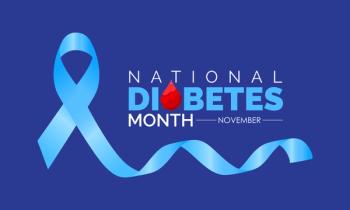
Travel-for-Treatment Provides Access to Cost-Effective Prescription Drugs
Best practices to safely, legally source prescription medications in Mexico.
Surging health care inflation and
Travel-for-treatment, also referred to as
According to the
This opportunity is rapidly becoming highly sought as a cost-effective treatment option for employer-sponsored and self-insured health plan participants. Cost challenges, especially for the underinsured, as well as health care reform considerations, have caused major US health insurers to jump onto the travel-for-treatment trend.
US Health Care Spending from a Global Perspective
Americans are paying higher prices for health care services than any other country. In 2021, the United States spent 17.8% of gross domestic product (GDP) on health care, nearly twice as much as the average Organization for Economic Cooperation and Development (OECD) country. This includes spending in subsidized health programs, such as Medicaid and Medicare, as well as employer-sponsored coverage and self-insured plans.
Prescription drug prices in the United States are more than
According to a
Inflated Prescription Drug Costs: Sustaining Employee Health Coverage as a Benefit
Prescription drug costs are a concern among employer groups of all sizes that are seeing an increase in employee utilization of health care services that require additional medication expenditures. As a result, employers can expect moderate to significant
According to
As employer groups set priorities to sustain medical coverage as a benefit, many are considering
Medication Procurement in Mexico
Mexico is the second most popular destination for medical tourism globally, with an estimated 1.4 million to 3 million people coming into the country to take advantage of inexpensive treatment in 2020, as reported by
According to the
Mexican pharmacies offer branded prescription medications at lower prices than the United States. The price difference is significant, as certain medications cost up to 80% less when procured in Mexico.
To legally purchase prescription drugs in Mexico, Americans must comply with the same protocols as they would in the United States. This means obtaining prescriptions from a licensed Mexican physician and buying them at a registered Mexican pharmacy. When entering the United States with FDA-regulated products in personal baggage or sending products by mail or courier from abroad, the
Self-funded employers can leverage this opportunity to achieve improved health care outcomes for their employees
Rather than pay premiums to an insurance carrier—such as Blue Cross Blue Shield, Aetna, or Cigna—to cover employee benefits, a business will pay out-of-pocket from company assets to cover claims. These plans provide health insurance coverage to more than 100 million Americans.
Travel-for-Treatment as a Cost Savings Strategy
Self-insured sponsors are increasingly looking to sustain this offering to employees who simultaneously improve their member experience and reduce the cost of quality care. Even though the increased insurance cost has shifted to working Americans, US employers are identifying self-funding strategies that reconcile health care offerings with the business's financial goals—attracting and retaining healthy employees while maintaining the bottom line.
Employers typically cover the procedure cost and care involved when a participant elects travel for treatment. As a result, a procedure that might have required the patient to pay toward their deductible, coinsurance, and cost shares during a calendar year—often amounting to $5000 or more—will cost the patient nothing. The patient not only avoids a significant expense but, even more importantly, benefits from the more consistent, data-driven quality of health care.
Coordination of Safe and Effective Cross-Border Medical Travel
Most US employers who provide their employees a travel-for-treatment option refer their participant to a
As a trusted partner for cross-border health care, Centers of Excellence provide pre-operative and post-operative services in the United States and coordinate surgical procedures and clinical care in Mexico. Procedures done in Mexico are performed by board-certified physicians at internationally accredited hospitals—from renowned physicians on either side of the border to state-of-the-art facilities that follow US clinical protocols. Concierge service models maximize the patient experience.
Best Practices When Using a Mexican Pharmacy
Drug purity, safety, and efficacy should be primary concerns, as these medications—sometimes infusion therapies—cannot be monitored or guaranteed unless administered by a reliable, trustworthy clinician
1. Obtain a Valid Prescription
Get a written prescription from a Mexican physician licensed by Mexico's federal government. We recommend you verify their credentials at
2. Locate a Travel-for-Treatment Intermediary or Pharmacy
After a consultation with a medical professional, purchase the prescription from a reputable pharmacy that can provide evidence of a valid license to operate within the Mexican state location. Federally-approved suppliers are a source of authentic medications, serving as trusted intermediaries between licensed pharmacies and their retail customers. This process helps to ensure product safety and quality.
3. Confirm the intermediary or pharmacy only dispenses FDA-approved and COFEPRIS-registered medications
Sometimes, medications have different brands and trade names in Mexico. Before purchasing, it is essential to check for the prescription's correct generic or scientific name.Ask the physician if they purchase their medicines from COFEPRIS-licensed suppliers. *COFEPRIS (Commission Federal para la Proteccion contra Riesgos Sanitarios), is Mexico’s equivalent to the FDA. Illegal "pop-up pharmacies" are NOT COFEPRIS licensed. Ensure a licensed Mexican physician administers the drugs as Mexico requires and as the FDA enforces for exportation to the United States.
4. Be Cautious of Counterfeit Medications, Recognize Signs of Tampering
Consumers should be cautious of counterfeit medicines. Sometimes they resemble authentic brands, but these knockoff medications may be ineffective, have the wrong strength, or contain harmful ingredients. Always ensure drugs come in their original unopened packaging, tamper-resistant seals are intact and there are no signs of damage.
About the Author
Michael R. Agostino, RPh is CEO of
Newsletter
Stay informed on drug updates, treatment guidelines, and pharmacy practice trends—subscribe to Pharmacy Times for weekly clinical insights.


















































































































































































































